Tissue Culture Methods: Techniques and Applications
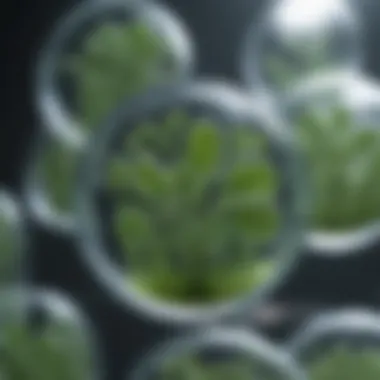
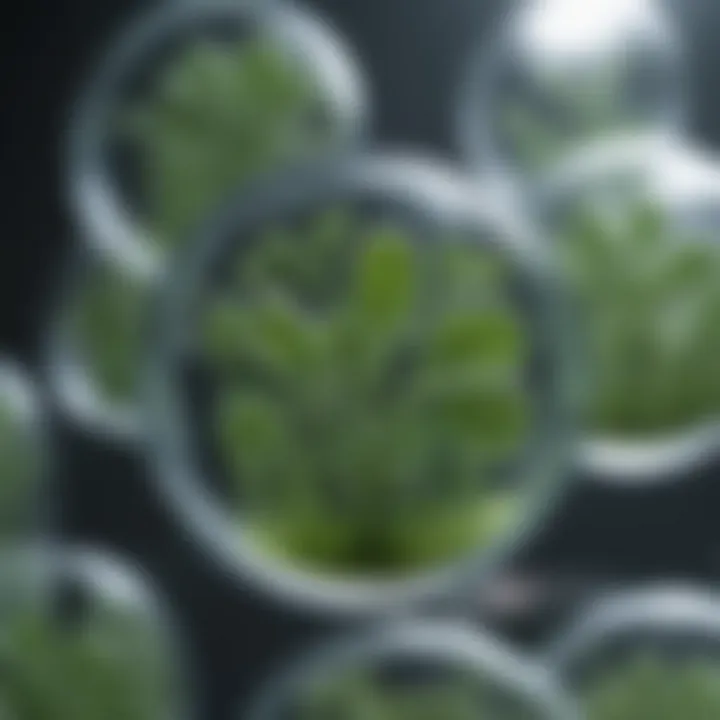
Intro
Tissue culture is a fascinating field within biological sciences, which holds the potential to transform both research and practical applications. This method involves the cultivation of cell, tissue, or organ fragments in a controlled environment, often utilizing sterile conditions. The significance of tissue culture methods extends beyond mere experimentation; they play a pivotal role in furthering our understanding of cellular behavior, plant propagation, and even disease research.
Biologists and agricultural scientists alike draw from this methodology to enhance productivity and sustainability. Its applications range from cloning plants to producing pharmaceutical products. Each of these capabilities highlights how tissue culture can advance innovations across many sectors.
The following sections will provide a detailed analysis of tissue culture methods, the underlying principles, and the implications of these techniques in various fields. By intricately examining methodologies and applications, we aim to elucidate the nuances of tissue culture, while addressing its challenges and future directions.
Preface to Tissue Culture
Tissue culture is a pivotal aspect of modern biological and agricultural research. It enables scientists and practitioners to manipulate plant cells, tissues, and organs in a controlled environment. This method allows for both the propagation of plants and the study of specific biological processes. The significance of tissue culture lies in its ability to produce large quantities of identical plants, aid in the conservation of endangered species, and facilitate research in genetic engineering and medical fields.
By isolating the specific components of a plant or organism, researchers can explore cellular behavior, study genetic traits, and develop disease-resistant plants. Furthermore, tissue culture plays a vital role in biotechnology, where it is used for producing secondary metabolites, conducting genetic research, and advancing pharmaceuticals. The efficiency and precision of tissue culture techniques have transformed the way we approach plant science, making it an essential tool in innovation and sustainability.
Definition and Scope
Tissue culture refers to the techniques of growing cells, tissues, or organs in an artificial medium, separate from the parent organism. The term encompasses a variety of methods that can be used for both plants and animal cells. Tissue culture is characterized by its aseptic conditions, which prevent contamination by pathogens and other microorganisms.
The scope of tissue culture is expansive; it includes micropropagation methods, meristem culture, suspension culture, and more. Each method serves specific purposes, whether it's for commercial plant production, research in cell biology, or genetic conservation efforts. The versatility of tissue culture allows scientists to engage in various applications across multiple sectors, including agriculture, horticulture, and medicine.
Historical Context
The origins of tissue culture date back to the early 20th century, when scientists began experimenting with growing plant tissues in vitro. One of the foundational moments occurred in 1902 when Dutch botanist Hugo de Vries first demonstrated that plant cells could grow outside their natural environment. Over the decades, advancements in nutrient media formulation and sterilization techniques spurred developments in the field.
In the 1950s, researchers like Frederick G. E. McCulloch and James E. Till expanded on earlier works by applying tissue culture techniques to animal cells. This movement laid the groundwork for applications in medical research, paving the way for breakthroughs in genetics and regenerative medicine. Today, tissue culture methods continue to evolve with the integration of technology, pushing the boundaries of what is possible in both plant and animal research.
"The innovation of tissue culture techniques marked a transformative phase in biological sciences, bridging traditional methods with modern technology."
In summary, tissue culture serves as a crucial bridge between theoretical knowledge and practical application in numerous biological sciences. This introduction sets the stage for a deeper understanding of its fundamental principles and diverse methodologies.
Fundamental Principles of Tissue Culture
Tissue culture, a cornerstone of modern biological research, hinges on several fundamental principles that guide its practice. Understanding these principles is crucial as it informs researchers and practitioners about the ideal conditions and methods for successful cultivation of cells and tissues in vitro. This section will explore various aspects including cellular totipotency, environmental conditions, and growth regulators, each playing a vital role in the overall success of tissue culture techniques.
Cellular Totipotency
Cellular totipotency refers to the unique ability of a single cell to develop into a complete organism. This characteristic is central to tissue culture as it enables the regeneration of plants from somatic cells, allowing for genetic variety and propagation. In many plant species, the totipotent state is most abundant in embryonic tissues and meristematic cells. The potential to create whole plants from isolated cells posits tissue culture as an invaluable tool in plant biotechnology and agriculture.
Recognizing the importance of totipotency enables the development of protocols for plant regeneration, which can lead to greater efficiency in crop production and conservation efforts. It also poses certain considerations regarding genetic fidelity, as deviations during culture could lead to somaclonal variations, which warrants a careful approach when implementing such methods.
Environmental Conditions
The success of tissue culture is heavily reliant on optimal environmental conditions, whereby various factors are tailored to ensure the viability and growth of cultured cells. The three primary elements include temperature management, nutrient requirements, and pH considerations. Each plays a distinctive role in achieving desired outcomes in tissue culture practices.
Temperature Management
Temperature management is a critical element in the cultivation of tissues. Each plant species has an optimal temperature range for tissue growth which influences metabolic activities. Maintaining the correct temperature is essential as deviations can lead to slow growth or even cell death.
A key characteristic of temperature management is its direct impact on enzyme activity. Enzymes function best within specific temperature ranges, facilitating processes like photosynthesis and respiration. The unique feature of optimal temperature conditions benefits overall growth rates and developmental processes, making it a popular focus in tissue culture practices. However, one drawback is the need for precise monitoring equipment, which can increase costs.
Nutrient Requirements
Nutrient requirements encompass the specific needs for macronutrients and micronutrients essential for cell growth and proliferation. These include sugars, vitamins, and minerals like nitrogen, phosphorus, and potassium.
The importance of proper nutrient formulation cannot be overstated. Nutrients provide the foundational building blocks for cellular structures and metabolism. A fundamental characteristic of nutrient requirements is their influence on culture media formulation, which affects growth rate, differentiation, and morphogenesis. However, administering incorrect nutrient concentrations could lead to toxicity or deficiencies, emphasizing the need for careful consideration and adjustments to meet specific needs of the cultured species.
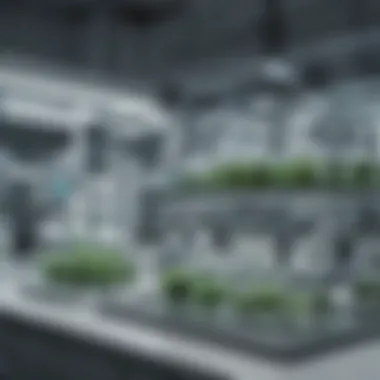
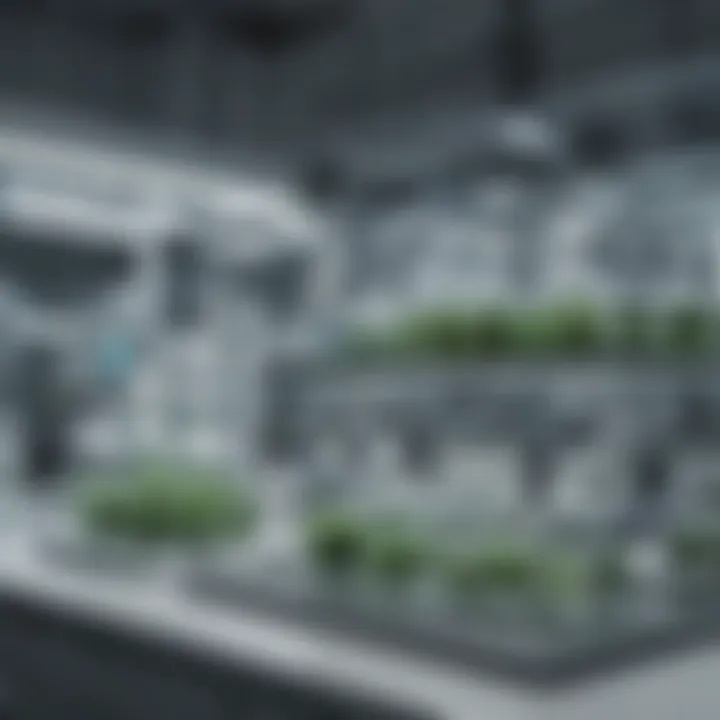
pH Considerations
pH considerations are imperative within tissue culture since it affects nutrient availability and metabolic processes. Maintaining an optimal pH range is necessary for cell growth and function.
The critical characteristic of pH in culture media lies in its effect on the solubility and uptake of nutrients. Typically, a pH of 5.5 to 6.0 is favorable for many plant tissues. The unique feature of pH consideration is its direct influence on cellular health; deviations from this range can hinder growth and induce physiological stress. Managing pH effectively is therefore a necessary step in optimizing culture conditions. Nonetheless, continuous adjustments may be required, leading to increased labor and monitoring efforts.
Growth Regulators
Growth regulators are organic compounds that influence cell division, growth, and differentiation in tissue culture. These compounds can be natural or synthetic and are vital for manipulating plant development. Different types include auxins, cytokinins, and gibberellins, each serving specific roles in promoting desired growth responses.
Growth regulators are key to achieving optimal growth and differentiation during tissue culture. They guide the development of shoots, roots, and even flowers, enabling propagation of species that might not otherwise be easily cultivated. However, the balance of these regulators is delicate; an excess can lead to abnormal growth patterns or outright failure of the culture. Understanding the intricacies of growth regulators informs effective cultivation strategies and contributes significantly to the advancements in tissue culture methodology.
Types of Tissue Culture Methods
Tissue culture methods are crucial in the realm of biological and agricultural sciences. They help in the understanding of plant growth and development, and they open pathways for innovations in genetic studies and crop production. Each type of tissue culture serves specific goals, making it essential to explore their characteristics and methodologies.
Micropropagation
Process Overview
Micropropagation is a widely used technique for rapidly increasing the numbers of plants through tissue culture. This process involves taking small plant sections, such as shoots or nodes, and placing them in a controlled environment with the right nutrient medium. The aim is to stimulate growth and propagation of new plantlets. Its significant characteristic is how efficiently it enables mass production of plants from a single source. This is beneficial for cultivating disease-free and genetically uniform plants. The downside, however, is that it requires a high level of technical skill and can be resource-intensive.
Applications in Agriculture
Micropropagation plays a key role in modern agriculture. It is popular because it allows for quick and efficient production of high-quality plants. This method is particularly advantageous for crops that are difficult to propagate through traditional methods. The unique feature here is its ability to produce clones of superior plants, ensuring consistent quality and yield. The main disadvantage is the potential for initial costs related to setup and maintenance of the tissue culture lab.
Meristem Culture
Principle and Process
Meristem culture focuses on utilizing the plant's meristematic tissues, which have the ability to divide and differentiate. This process is vital for generating plants that are free from viruses and other pathogens. The key characteristic of this method is the use of small portions of meristematic tissue, which are less likely to carry diseases. It is a beneficial choice, especially in the production of clean plant material. However, the complexity of isolating meristem tissues can present challenges for researchers and practitioners.
Role in Disease-Free Plant Production
Meristem culture significantly contributes to the production of disease-free plants. The method highlights its ability to eliminate pathogens through the careful selection of meristem tips. This characteristic is crucial for agricultural crops that need to be free of diseases. The unique advantage of this approach is the potential for several generations of disease-free plants. Still, it does demand strict adherence to aseptic techniques to avoid contamination.
Suspension Culture
Description and Techniques
Suspension culture involves cultivating cells in a liquid medium, allowing continuous growth and division. This method is notable for its ability to scale up cell production. The major benefit of suspension culture is that it provides a dynamic system where nutrients can be easily manipulated. However, maintaining cellular homogeneity can be challenging due to sedimentation rates.
Usage in Biotechnology
Suspension cultures find extensive applications in biotechnology. They are used for producing secondary metabolites and proteins. This method’s key characteristic is its ability to support high-density cell growth, facilitating large-scale production processes. It is popular for research and industrial applications, although the main disadvantage can arise from cell clumping, which affects uniformity in growth.
Callus Culture
Formation and Maintenance
Callus culture involves inducing unorganized cell growth from plant tissues. This type is valuable for studying cellular differentiation and developing new plant varieties. Its key characteristic is the formation of a mass of undifferentiated cells. This can be beneficial for research into plant physiology and development. On the other hand, maintaining callus culture is challenging due to the need for precise environmental conditions to prevent necrosis.
Applications in Genetic Studies
Callus culture has vital applications in genetic studies. It provides a system for plant transformation and regeneration, allowing researchers to study gene function and regulation. This method is favored for its ability to facilitate genetic modification and plant breeding programs. Nevertheless, the main limitation is that not all callus cultures regenerate efficiently into whole plants.
Tissue culture methods have opened new horizons in plant science, transforming traditional practices into innovative scientific endeavors.


Applications of Tissue Culture
Tissue culture methods are crucial in various fields, particularly in agriculture, medicine, and industrial applications. The versatility and wide-ranging benefits of tissue culture make it a powerful tool for researchers and practitioners. By cultivating cells, tissues, or organs in a controlled environment, these methods enable significant advancements and applications in the respective fields.
Agricultural Advancements
Crop Improvement
Crop improvement via tissue culture focuses on enhancing plant species through genetic and phenotypic modifications. The main aspect of this method is its ability to produce disease-resistant and higher-yielding plant varieties. Increased resistance to pests and diseases is a key characteristic of this approach. This makes crop improvement a favored method in agriculture because it addresses food security and sustainability.
A unique feature of crop improvement using tissue culture is the speed of producing new plant varieties. Traditional breeding often takes several seasons, while tissue culture can achieve results within months. One significant advantage is the capability to propagate plants that are difficult to breed through conventional means. However, challenges exist, such as the potential for genetic instability which may impact the plants' long-term performance.
Conservation of Endangered Species
Conservation of endangered species through tissue culture plays a vital role in preserving biodiversity. This aspect focuses on the propagation of rare and threatened plants, helping maintain genetic diversity. The key characteristic of this approach is its ability to create clones from limited plant specimens, which is particularly beneficial for species on the brink of extinction.
An important feature of conservation strategies using tissue culture is the establishment of gene banks. These facilities store genetic material and can regenerate plants when necessary, making it a popular choice in conservation efforts. Even though tissue culture can effectively propagate endangered species, it may not always capture the full genetic diversity found in wild populations. Thus, researchers should combine these methods with in-situ conservation efforts to achieve optimal results.
Medical Research
Drug Development
Tissue culture significantly impacts drug development by providing a controlled platform for testing new pharmaceuticals. This method allows researchers to study the effects of drugs on specific cell types, leading to more accurate results. The ability to use human cells in lab settings is a key characteristic that contributes to its relevance in drug development.
The unique advantage of using tissue culture in drug testing lies in the potential for high-throughput screening. Researchers can rapidly evaluate the effects of numerous compounds, decreasing the time frame of bringing new drugs to market. This efficient method, however, may face challenges such as the complexity of mimicking the human body’s response in vitro, which might lead to inaccurate predictions.
Tissue Engineering
Tissue engineering leverages tissue culture techniques to create artificial organs and tissues for medical applications. This approach aids in developing biomaterials and scaffolds that can support cell growth. A key characteristic of tissue engineering is its potential to regenerate damaged tissues or replace failing organs, offering hope for countless patients in need of transplants.
The unique advantage of tissue engineering is the ability to customize solutions for patients, potentially reducing rejection rates. While it presents enormous promise, it faces technical hurdles, such as ensuring sufficient blood supply to the engineered tissue, which is an ongoing area of research in this field.
Industrial Applications
Production of Secondary Metabolites
The production of secondary metabolites using tissue culture is essential in creating valuable compounds in pharmaceuticals, cosmetics, and food industries. This method allows the extraction of compounds like alkaloids, flavonoids, and terpenes from plant cells, which are often difficult to obtain from whole plants. A key characteristic of this method is its ability to generate high yields of these compounds efficiently.
One significant benefit of using tissue culture for secondary metabolite production is the ability to control environmental conditions, leading to enhanced quality and quantity. Nevertheless, this method often requires meticulous optimization of culture conditions, which may limit widespread commercial use due to the associated costs.
Bioremediation Efforts
Tissue culture techniques contribute to bioremediation efforts by cultivating plants capable of absorbing heavy metals and other pollutants from the environment. The primary aspect of bioremediation is its ability to utilize plant metabolism to detoxify contaminants. One key characteristic is the selection of hyperaccumulator species that can thrive in polluted environments.
The unique advantage of using tissue culture in bioremediation is the potential for mass propagation of plants, optimizing the remediating process. However, a limitation is that while tissue culture can enhance growth rates, it does not address all pollution types and may require combinations with other methods for effective remediation.
In summary, tissue culture applications span across agriculture, medical research, and industrial fields, demonstrating its importance in addressing modern challenges while providing innovative solutions.
Challenges in Tissue Culture
Tissue culture methods are essential tools in both agricultural and biomedical research. However, this field is not without its challenges. Understanding these challenges is crucial for optimizing culture techniques and improving outcomes. Addressing the issues that arise can elevate the success rate of tissue culture practices, ultimately benefiting research and industry applications.
Contamination Issues
Contamination is one of the foremost challenges faced in tissue culture. Microbial contamination from bacteria and fungi can severely compromise cultures. This issue often arises from the tools, media, or even the environment in which cultures are maintained. Once contamination occurs, it can lead to the loss of valuable specimens and resources.
To mitigate this challenge, researchers must adopt stringent aseptic techniques. Use of disinfectants on tools and surfaces can greatly reduce risks. In addition to routine sterilization, using specialized growth media that inhibit microbial growth serves as an effective strategy. Contamination not only affects the integrity of results in research but can also lead to economic losses in agricultural applications where healthy plant specimens are critical.
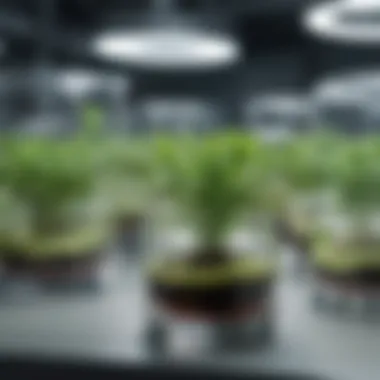
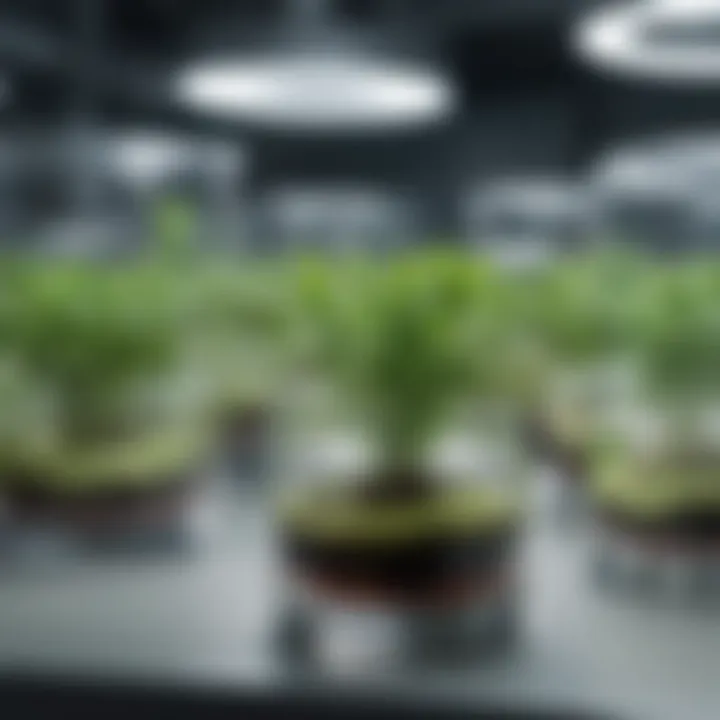
Genetic Stability Concerns
Genetic stability is another significant issue associated with tissue culture. While tissue culture aims for clonal propagation of plants or cells with desirable traits, the process can inadvertently introduce genetic mutations. These mutations can affect the overall quality and performance of the cultures. For instance, variations may lead to undesirable traits in agricultural crops which affects yield and disease resistance.
To manage genetic stability, strict selection criteria for parent material are necessary. Assessing genetic integrity through molecular techniques can be helpful in early detection of unwanted variations. Furthermore, researchers must monitor the long-term stability of in vitro propagated plants to ensure their suitability for field planting. Genetic consistency is not just a technical concern; it is vital for ensuring that the advancements in plant breeding and tissue culture yield intended results.
Cost and Accessibility
The cost and accessibility of tissue culture facilities can be a barrier, especially in developing regions. Establishing a tissue culture lab requires specialized equipment, materials, and knowledge, which may not be readily available in all areas. This financial aspect limits the capacity for research and development, particularly in low-resource settings where agricultural technologies are most needed.
To address this, it is important that funding agencies and institutions invest in affordable technologies and provide training programs for local scientists. Additionally, collaborative efforts can enable knowledge sharing and resource pooling among different research entities. Increasing accessibility can empower local farmers and researchers, potentially enhancing food security and biodiversity.
In summary, while tissue culture holds great promise for advancements in various fields, addressing the challenges of contamination, genetic stability, and economic accessibility is paramount for its successful application.
Future Directions in Tissue Culture Research
In today's rapidly evolving scientific landscape, the future of tissue culture research holds significant promise. The advancements made in this field are directly tied to the growing need for innovative solutions in agriculture, medicine, and industrial applications. A deeper understanding of tissue culture methods can lead to enhanced methodologies that address current challenges and capitalize on new opportunities. This section discusses the pivotal innovations and sustainability initiatives that are expected to shape the future of tissue culture.
Technological Innovations
Automation and Robotics
Automation and robotics play a transformative role in streamlining tissue culture processes. The integration of robotic systems simplifies repetitive tasks such as medium preparation, cell inoculation, and transfer to growth vessels. One key characteristic of automation in tissue culture is the consistency it brings. By minimizing human error, it increases reliability in results, which is critical for research and commercial production.
Moreover, robotic systems can operate continuously, thus enhancing throughput. This aspect is particularly beneficial for large-scale operations. One unique feature of these technologies is their ability to manage multiple experiments simultaneously, allowing for efficient resource use and reduced labor costs. However, the initial investment in automation can be high, which may not be feasible for all labs. Still, the long-term advantages often outweigh these upfront costs, leading to improvements in productivity and research outcomes.
CRISPR and Genetic Editing
CRISPR technology represents a significant leap forward in genetic editing and its application in tissue culture. This method allows for precise modifications to the DNA of plant cells, which can lead to enhanced traits such as disease resistance or improved yield. The key characteristic of CRISPR is its accuracy; it enables researchers to target specific genes without introducing unwanted changes.
Its popularity in this article stems from the urgent need for sustainable agricultural practices. By facilitating the development of genetically modified organisms (GMOs) that are resilient to climate change, CRISPR can help safeguard food security. One unique advantage of CRISPR compared to traditional methods is the speed at which modifications can occur, significantly shortening the time required for plant breeding programs. However, there are ethical considerations and regulations surrounding genetic modifications that researchers must navigate. Balancing innovation with these concerns remains a critical aspect of future directions in tissue culture.
Sustainability Initiatives
As the world faces significant environmental challenges, sustainability initiatives are becoming increasingly crucial in tissue culture research. The focus on developing methods that minimize environmental impact is paramount. Key strategies in this area include the optimization of resource use, waste reduction, and the establishment of eco-friendly practices. For instance, the use of renewable materials for culture media can help decrease dependency on petroleum-based products.
Moreover, sustainable practices such as biowaste recycling can contribute to the overall efficiency of tissue culture operations. Implementing methods that utilize by-products from other industries can also serve to integrate tissue culture more seamlessly into sustainable agricultural frameworks.
“The future of tissue culture is not only about innovation but also about responsibility towards our environment.”
By aligning tissue culture practices with sustainability goals, researchers can not only enhance productivity but also contribute positively to ecological preservation. Through collaborative efforts, advancements in sustainable methods are expected to become key components of future research initiatives in this field.
Culmination and Implications for Research
The field of tissue culture represents a vital segment in biological and agricultural research. Its methods enable significant advancements in various areas, making this article's findings crucial. Tissue culture not only paves the way for efficient plant propagation but also serves essential roles in medical and industrial applications. Understanding the implications of these techniques is important for researchers and practitioners alike.
In summary, tissue culture methods have far-reaching impacts on genetic improvement, conservation efforts, and the production of pharmaceuticals. The techniques allow for the rapid multiplication of plants and the recovery of disease-free specimens, which is beneficial for agriculture and horticulture. Moreover, the applications extend into medical research, contributing to advancements in drug development and tissue engineering.
Researchers are increasingly focusing on addressing challenges like contamination and genetic stability, which are pivotal for the reliability of tissue culture practices. This knowledge is critical for anyone engaged in this field, as it forms the basis for future breakthroughs.
"Tissue culture methods represent both a challenge and an opportunity, reinforcing the necessity for continuous research and improvement in techniques."
Summary of Key Points
- Tissue culture is crucial in plant propagation, enabling rapid multiplication.
- Its applications extend to medical research, including drug developmment and tissue engineering.
- Challenges such as contamination and genetic stability require ongoing attention.
- The significance of understanding these methods is paramount to driving innovation.
Call for Further Research
The need for further research in tissue culture methods cannot be overstated. As challenges arise, continued investigation into solutions will enhance both the methodologies and their applications. Areas such as:
- Automation and Robotics: Exploring the integration of advanced technologies can increase efficiency and reduce human error in tissue culture.
- CRISPR and Genetic Editing: Understanding how these technologies can be combined with tissue culture techniques may lead to revolutionary applications in genetic interventions.
- Sustainability Initiatives: Investigating means to make tissue culture more environmentally friendly is essential, especially given global concerns regarding agriculture and biodiversity.
By focusing on these avenues, researchers can unlock new potentials in tissue culture, ensuring its continued relevance and application in various fields.



